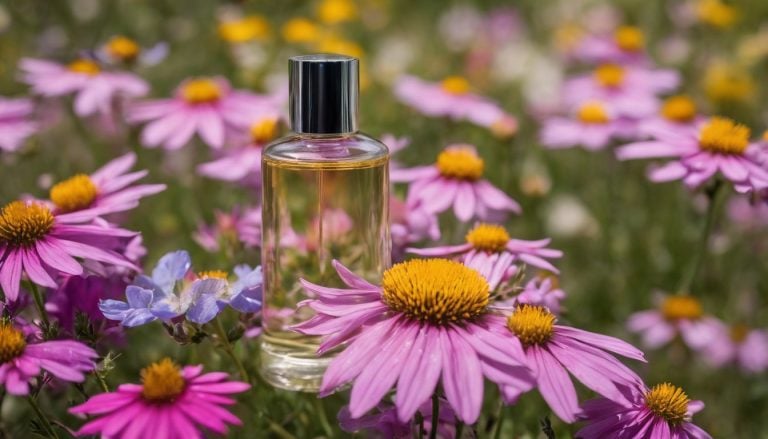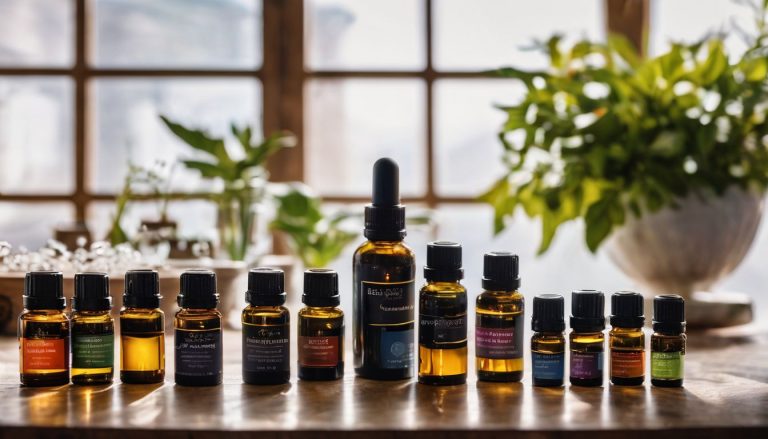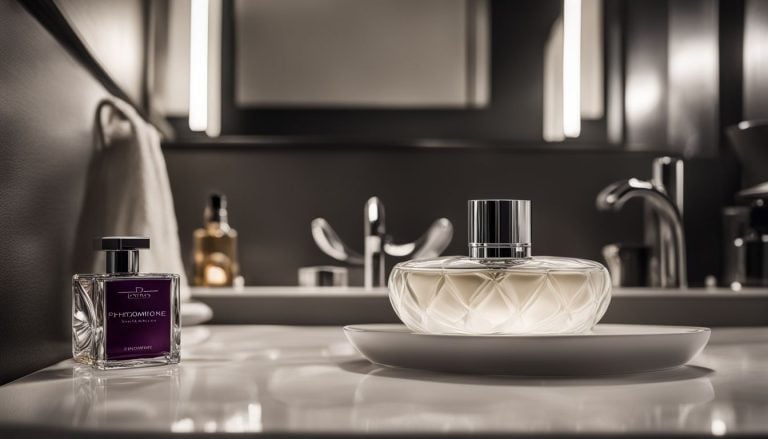Do Pheromone Colognes Work? The Science Behind Their Effectiveness
Are you curious if a spritz of cologne can really boost your appeal? Pheromone perfumes promise to enhance attraction by using scents that mimic natural chemical signals. This article will dive into the science behind pheromones and whether these special colognes live up to their claims.
Keep reading, it might just change your dating game!
Key Takeaways
- Pheromone perfumes contain synthetic chemicals like androstenone and copulins, which manufacturers claim can increase attraction, but solid scientific evidence is lacking.
- While some people report positive experiences with pheromone colognes, studies show that any effects are likely due to a placebo effect rather than the scents themselves.
- Human responses to synthetic pheromones vary widely, so these products may not work for everyone in enhancing sexual appeal or attractiveness.
- Proper application of pheromone perfumes—on pulse points and avoiding overuse—is important for potential effectiveness; however, personal body chemistry also plays a significant role.
- It’s wise to consider potential side effects such as skin irritation or allergic reactions before using pheromone colognes extensively.
Understanding Pheromones
Pheromones are chemical signals that animals and humans release to communicate with each other. They work by triggering a response in the recipient, often without their conscious awareness.
What are pheromones?
Pheromones are chemical signals released by an organism to communicate with others of its species. They play a crucial role in the behavior and attraction among animals, influencing mating patterns and territorial claims.
In humans, pheromones are believed to be secreted through sweat glands and have been linked to subconscious cues that might impact another person’s perception, potentially affecting attraction and sexual appeal.
Scientists have long studied these invisible scents, theorizing their influence on human interaction and connectivity. Perfumes and colognes claiming to contain human-compatible pheromones aim to enhance a person’s natural allure by sending out signals that could subconsciously draw others in.
However, it’s important to note that the evidence supporting these claims remains largely anecdotal, making the true power of pheromones in human behavior still somewhat of a mystery.
How do they work?
After understanding what pheromones are, it’s important to explore how they work. Pheromone colognes and perfumes contain synthetic versions of naturally occurring chemicals in the body, which animals use to communicate with each other.
When a person wears pheromone cologne or perfume, these synthetic chemicals are released into the air around them. The idea is that when others inhale these scents, their brain may interpret them as signals of attractiveness or arousal.
In essence, pheromone colognes work by triggering subconscious responses in individuals who come into contact with the scent. While there is ongoing debate about the exact mechanisms through which this occurs and limited evidence to fully support their effectiveness, some individuals report positive experiences using pheromone products.
Pheromone Perfume Ingredients
Pheromone perfumes generally contain common ingredients such as androstenol, androsterone, or copulins. These chemical compounds are believed to mimic the natural pheromones produced by the body.
Common ingredients found in pheromone perfumes
Pheromone perfumes generally contain synthetic versions of natural chemicals like androstenone, androstenol, and copulins. These chemicals are thought to influence social and sexual behavior in animals. Here are the common ingredients found in pheromone perfumes:
- Androstenone: Typically associated with male pheromones, it’s believed to enhance perceived dominance and confidence.
- Androstenol: Often linked with social bonding, this compound may create an approachable and friendly aura.
- Copulins: Primarily found in female secretions, copulins are suggested to potentially enhance male arousal and attraction.
- Estratetraenol: Thought to elicit feelings of comfort and relaxation, it’s often included in products targeted towards women seeking to attract men.
Types of pheromones used
In pheromone perfumes, various types of synthetic compounds are used to replicate naturally occurring pheromones. These include androstenol, androsterone, androstadienone for men’s colognes, and copulin for women’s perfumes.
Androstenol is known for its social effects and is often associated with feelings of friendliness. Androsterone is believed to convey a sense of masculinity. On the other hand, androstadienone has been linked to emotional responses in women when exposed to it.
Copulin is a substance found in female vaginal secretions that purportedly increases sexual attraction in men.
The Claim: Making You More Attractive
Studies and research have explored the potential of pheromones to make individuals more attractive, particularly in a romantic or sexual context. Can they truly enhance your appeal? Let’s delve into the science behind their effectiveness.
Studies and research on pheromones and attraction
Pheromones have been extensively studied in animals to understand their role in attraction and mating behavior. While there is evidence that pheromones influence animal behavior, the scientific community has not reached a consensus on their impact on human attraction.
Research shows that while some individuals may respond to pheromones, the overall human response remains limited and inconclusive. Despite claims made by manufacturers of pheromone perfumes, there is weak scientific evidence supporting their effectiveness in eliciting strong sexual or romantic appeal in humans.
Furthermore, studies have shown that the olfactory system processes scents differently for each individual, making it challenging to determine a universal response to pheromone perfumes.
Can they make you more attractive?
Pheromone perfumes aim to enhance attractiveness, but scientific evidence backing their effectiveness is weak. While animal studies suggest that pheromones play a role in attraction, human responses to synthetic pheromones are limited.
Although some individuals believe in the allure of these scents, there is no solid proof to support their claims. Despite marketing efforts emphasizing increased arousal and confidence, the impact of pheromone perfumes on human behavior remains a topic of debate within the scientific community.
Given this lack of concrete evidence for their effectiveness, the idea that pheromone perfumes can significantly enhance attractiveness should be approached with caution.
The Truth Behind Pheromone Perfumes
Despite the claims made by manufacturers, there is actually a lack of scientific evidence to support the effectiveness of pheromone perfumes. Studies have shown that humans have a limited response to pheromones, casting doubt on their ability to significantly influence attraction.
Lack of scientific evidence
Despite the marketing claims and growing trend on social media, there is weak evidence to support the effectiveness of pheromone perfumes in influencing human behavior and attraction.
While some individuals may believe in their efficacy, scientific understanding does not strongly back up these claims. Pheromone perfumes are designed to mimic naturally secreted scents called pheromones, which do influence behavior and attraction in animals, but there remains limited human response to such fragrances.
Manufacturers continue to capitalize on the concept of human-compatible pheromones despite the lack of concrete evidence for their effectiveness. The idea behind pheromone perfumes is that by wearing them, individuals may emit subconscious signals that make others more attracted to them.
Limited human response to pheromones
Pheromone perfumes are designed to influence human behavior by mimicking naturally secreted scents called pheromones. However, the scientific evidence supporting their effectiveness in eliciting a strong response from humans is weak.
Despite the claims made by manufacturers and popular online platforms, limited concrete evidence exists to support the notion that pheromone perfumes can significantly impact human attraction or arousal.
Some users may experience a placebo effect when using these products, but their true effectiveness remains a topic of debate within the scientific community.
Tips for Using Pheromone Perfumes
Proper application techniques and choosing the right scent are important when using pheromone perfumes. It’s also crucial to be aware of potential side effects before trying them out.
Proper application techniques
To apply pheromone perfumes effectively, follow these steps:
- Begin by applying the perfume to your pulse points, such as the wrists, neck, and behind the ears. These areas emit heat, intensifying the scent.
- Apply the perfume to clean and moisturized skin to help it last longer and enhance the fragrance.
- Use a light hand when applying pheromone perfumes to avoid overwhelming those around you with an overpowering scent.
- Avoid rubbing the perfume into your skin as this can alter the chemical composition of the fragrance.
- Reapply pheromone perfumes throughout the day to maintain a consistent and alluring scent.
- Experiment with different scents to find one that complements your natural body odor.
Choosing the right scent
Selecting the appropriate scent is crucial when it comes to pheromone perfumes. Consider your personal preference and the occasion where you will be wearing the perfume. Different scents may evoke varying emotions and responses in people, so it’s essential to choose a fragrance that aligns with your personality and style while also appealing to those around you.
Understanding the common ingredients found in pheromone perfumes can help guide your choice, as certain scents are known to have specific effects on mood and attraction. Remember that individual body chemistry can also influence how a scent interacts with your skin, so experimentation may be necessary to find the best match for you.
When selecting a pheromone perfume, consider whether you prefer a floral, fruity, or musky scent based on personal preference and intended use. Different fragrances can elicit different emotional responses from those who encounter them; thus choosing wisely is paramount for achieving the desired effect of increased attractiveness.
Potential side effects
- Choosing the right scent is crucial when using pheromone perfumes, but it’s also important to be aware of potential side effects. Here are some things to consider:
- While pheromone perfumes are generally safe, some people may experience skin irritation or allergic reactions to the ingredients.
- It’s essential to be mindful of any strong fragrance in the perfume, as it can trigger headaches or cause respiratory discomfort in sensitive individuals.
- Pheromone colognes containing alcohol may cause dryness or irritation on the skin, particularly for those with sensitive skin.
- Overuse of pheromone perfumes can lead to an overpowering scent that may be off – putting rather than attractive.
- Some users have reported feeling anxious or agitated after using certain types of pheromone perfumes, indicating potential psychological effects.
- It’s advisable to perform a patch test before applying pheromone perfumes more extensively on the body to ensure there are no adverse reactions.
These potential side effects should be carefully considered before using pheromone perfumes.
Conclusion: Are Pheromone Colognes Worth Trying?
In conclusion, the effectiveness of pheromone colognes remains a topic of debate within the scientific community. Some companies claim that adding human-compatible pheromones to products can increase arousal and improve confidence.
However, there is weak evidence to support these claims, and the limited human response to pheromones raises questions about their true impact on attractiveness and sexual appeal. Despite their popularity, it’s essential for individuals to approach the use of pheromone colognes with caution due to the lack of concrete scientific evidence supporting their effectiveness.
FAQs
1. What are pheromone colognes and do they really work?
Pheromone colognes are perfumes that include human-compatible pheromones, believed to increase attractiveness to others by sending out subconscious signals regarding sexual and romantic appeal.
2. How can pheromone perfumes affect attraction?
Pheromone perfumes may play a role in attraction by releasing chemicals that can subconsciously influence how people perceive your sexual appeal, potentially making you more appealing to them.
3. Is there evidence supporting the effectiveness of pheromone colognes?
While some studies suggest a link between humancompatible pheromones and attractiveness, clear scientific evidence on the overall effectiveness of pheromone perfumes is still being debated among researchers.
4. Can both men and women use pheromone colognes for an enhanced appeal?
Yes, there are specific types of pheromone colognes designed for men as well as the best pheromone perfume versions tailored for women aiming to boost their allure in social situations.
5. How should someone use a pheromone perfume or cologne effectively?
To use aphreromon perfume or cloognee effectiverlye , apply it like any other fragrance focusing on pulse points; then interact with people normally as these areas help disseminate the scent smoothly throughout your surroundings.









